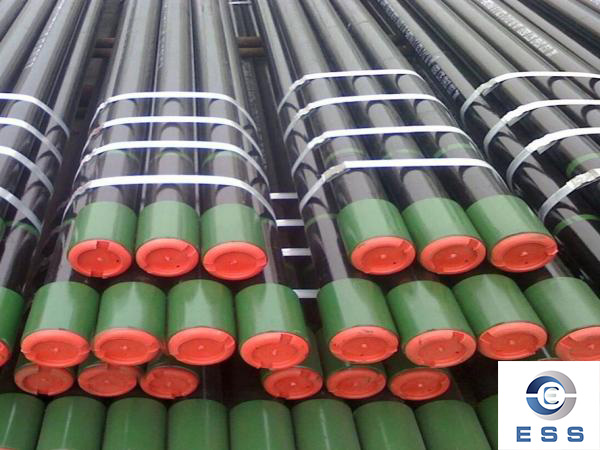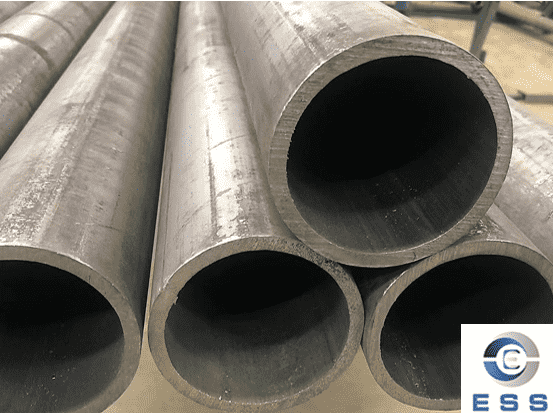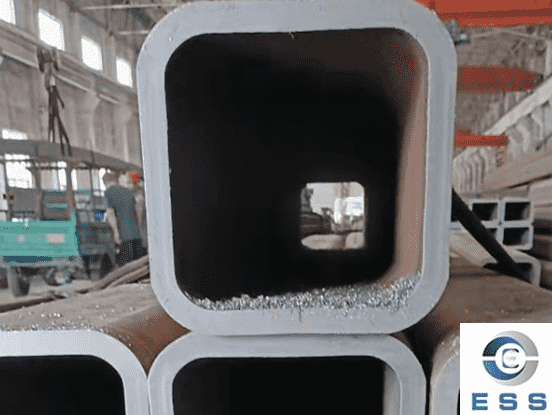Steel Casing Pipe Weight Calculation

Casing pipe Introduction
Casing pipe refers to the process of drilling oil wells. During the drilling process, the casing pipe is gradually inserted from the inner tube to the outside at the bottom of the drilling pipe, thus forming an interconnected oil well annulus pipeline system. It is usually made of seamless steel pipe .
Casing pipe weight calculation method and precautions
I. Casing pipe weight calculation method
Casing pipe weight can be calculated by the following formula:
Weight (kg) = length (m) × diameter (mm) × wall thickness (mm) × material density (kg/m³) × π/4
Wherein, the length is the actual length of the casing pipe, the diameter is the average of the inner diameter and the outer diameter, the wall thickness is the outer diameter minus half of the inner diameter, the material density can generally be found in the material manual, and π is the pi.
For example, a casing pipe with a diameter of 50mm, a wall thickness of 4mm, and a length of 3m has a material density of 7800kg/m³, and its weight is calculated as follows:
Weight (kg) = 3m × (50mm+54mm)/2 × (54mm-50mm)/2 × 7800kg/m³ × π/4= 3m × 52mm × 2mm × 7800kg/m³ × 3.14/4 = 48.7kg
Please note that this calculation assumes that the casing pipe is a uniform cylindrical shape and does not consider any welding, threads, or other factors that may affect the weight. The actual weight may vary due to manufacturing tolerances, coatings, threads, etc.
Notes
1. The effect of casing pipe material on weight:
Different materials have different densities and the effect on weight is also different. For example, the weight of steel and copper casings of the same size will be very different. In engineering design, the casing pipe material should be carefully selected to meet engineering requirements while controlling the weight.
2. The influence of casing pipe size and quantity:
The size and quantity of casing pipe also have a great influence on weight. If it is a large-diameter or long-length casing pipe, its weight will be correspondingly larger. At the same time, it is necessary to pay attention to the number of casings, because the weight of casings will also increase with the increase in number. In engineering design, the size and quantity of casings should be determined according to the actual situation to control the weight.
3. Guarantee of calculation accuracy:
The weight calculation formula of casing pipe is a theoretical calculation, and different calculation accuracy has different effects on the results. Therefore, the calculation accuracy should be guaranteed as much as possible during calculation to reduce errors to ensure the accuracy of the calculation results.
In short, the weight calculation of casing pipe needs to consider many factors, including the size, quantity, material, calculation accuracy, etc. of casing pipe. In practical applications, the weight of casing pipe is usually provided by the manufacturer, or more accurate calculation results can be obtained by querying the formulas and charts provided in the API standard. If more detailed calculations or other factors are required, they should be calculated according to the actual situation, and the influence of various factors should be paid attention to to ensure that the weight of casing pipe is controlled within a reasonable range. You can refer to the API standard or contact the casing pipe manufacturer to obtain specific data.
Read more: A Comprehensive Guide To Steel Casing Pipe













 Eastern Steel Manufacturing Co.,Ltd not only improve product production and sales services, but also provide additional value-added services. As long as you need, we can complete your specific needs together.
Eastern Steel Manufacturing Co.,Ltd not only improve product production and sales services, but also provide additional value-added services. As long as you need, we can complete your specific needs together.










